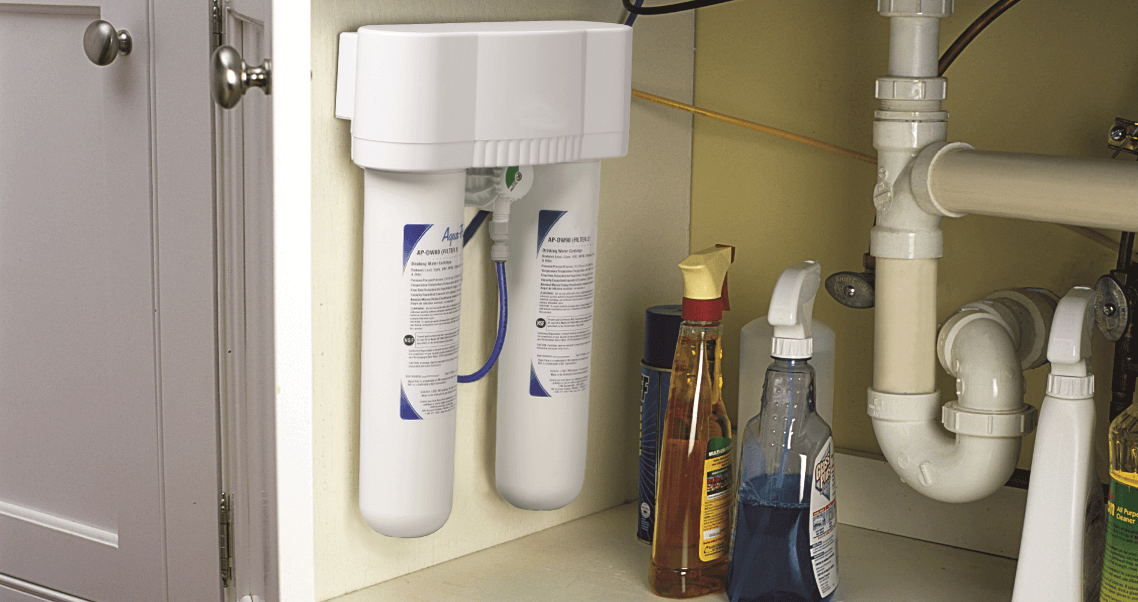Water Treatment Systems Purify the Home
If you are concerned about the quality of your drinking water, filters are a viable and affordable option that will give you bottle-quality water straight from the tap. However, as home water purification systems are available in a wide variety of set-ups, knowing the best one for your home can be difficult. While top-of-the-line drinking water filters are unbeatable in performance, the other options can be very enticing to those on a budget. Here are a few tips on distinguishing one home water purification system from the next, and some advice on which set-up will work best in your home. To help in your decision making, consider calling Silverado Rooter & Plumbing for their expert advise.
Cheap Drinking Water Filters
While cheap drinking water filters are available at nearly every department store, when compared to more complex home water purification systems, the former often comes up short. Many of the more affordable drinking water filters on the market require you to attach something to your existing kitchen faucet and flip the device whenever you want good quality water. In some cases, homeowners find that the seal between the faucet and the water filter deteriorates quickly or isn’t tight from the beginning; in many other instances, replacing filter components isn’t done frequently enough and the water you end up with is about the same quality as it would have been straight from the faucet. Since these contraptions are not always the most durable or convenient options, many have found that a slightly larger initial investment in a more permanent drinking water filter is the secret to water quality success!
Under-Sink Drinking Water Filters
Home water purification systems that are installed permanently underneath the sink are the next rung on the water filtration ladder. These units typically function extremely well and produce very high quality water, and they require very little attention to maintain. Though they are certainly more pricey that buying a filtering pitcher to keep in the fridge or installing a slip-on faucet filter, the convenience and performance of these drinking water filters is, in many opinions, worth the higher cost.
Since municipal water is tested regularly for the most common, harmful contaminants (though they don’t test for taste or contaminants in your water that aren’t deemed harmful), under-sink drinking water filters are probably as complex a system as any city-dweller will need. However, when the water you bathe in, brush your teeth with, and wash your clothes in comes from a well, there’s a good chance that an even more comprehensive home water purification system is necessary.
Point of Entry Home Water Purification Systems
Point of entry purification systems are installed where the water enters your home and filters all water entering the house. These systems typically deal with the actual health of your drinking, washing, and cooking water. Well water that enters your home isn’t altered unless you alter it, and while some wells are perfectly contaminant-free, many others provide water that must be filtered and purified not just to taste good, but to be safe for you as well as your plumbing! Installing a point-of-entry home water purification system and getting your well tested regularly will ensure that your family isn’t at risk due to harmful contaminants, and your plumbing isn’t being exposed to mineral deposits that can cause poor function and premature aging.
Methods Used in Drinking Water Filters
Water treatment systems are not only varied in their forms, but in how they function, as well. These are the most common methods used in water filtration:
- Carbon Filters: The most common of all water purification systems, carbon filters are the ones that attach directly to an individual faucet or are included in filtering pitchers. The carbon cartridge inside the filter instantly removes organic compounds when water is in contact with it. They’re very affordable ($30-100), but the cartridge will have to be replaced periodically.
- UV and Reverse Osmosis: These two methods use a high-tech form of ultra-violet light or membrane filters to remove all harmful minerals in the water supply. These can treat as well as condition your water and are often the methods used in under-sink water filtration systems. Expect basic systems to run in the hundreds of dollars and the most complex systems to be in the low thousands.
- Water Softeners: Hard water is caused by increased levels of calcium and magnesium in the supply. Hard water can cause scaling in water heaters, ruin the life of appliances, and hinder everyday routines (washing dishes, showering, laundering, etc.), as well as smell and taste bad. A water softener passes the hard water through an ion-exchange bed and turns the calcium into sodium, which in turn softens your water for more effective use. Water softeners are a necessary part of point-of-entry water purification systems for many well users.
